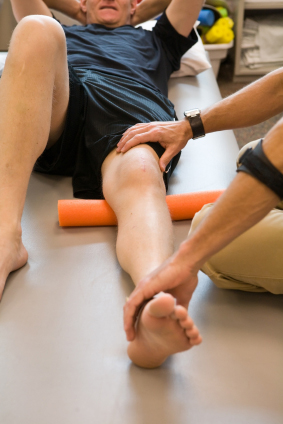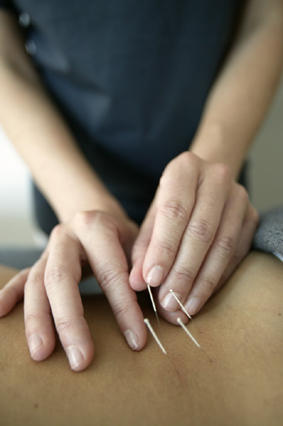Ways to Control Pain
Prevention and early treatment with factor
Prevent the pain of Hemophilia by preventing bleeds. Take care of yourself by eating healthy food, getting enough rest, and exercise your body. See your doctor for regular check-ups. The best way to reduce pain at the time of the bleed is to treat immediately with factor. Taking factor will not relieve pain right away. The pain will gradually go away as the pressure is reduced. Although factor is not a pain killer, taking factor is the way to prevent further pain.
When you have pain, first assume that the pain is due to a bleed, especially in the joints. If you are not sure about taking factor, go ahead and take it and consider contacting your HTC provider. It is better to take factor when you don't need it than not to take factor when you do. If you cannot tell where the pain is coming from (for example, a joint or muscle), call your doctor or HTC. Your doctor may want to examine you to find the source of the pain.
Remember that if you are bleeding, relieving the pain does not stop the bleeding. Medicine and other forms of pain control are not meant to be used in place of factor, but along with it. For instance, a cold pack might be a helpful pain reliever to be used after taking factor. You can make your own cold pack by keeping a wet washcloth in your freezer or ice in a plastic bag. A sack of frozen peas easily wraps around joints.
 Physical therapy (PT)
Physical therapy (PT)
Physical therapy is often used along with pain medicine. Some physical therapy methods are exercise, water therapy, and orthopedic devices such as splints. The physical therapist may also teach relaxation techniques or biofeedback.
TENS (transcutaneous electrical nerve stimulation) is a pain control method sometimes used in physical therapy. A small battery-operated unit is attached to the body with wires and pads. The unit sends out a mild current of electricity. The brief pulses of electricity work on the nerves under the skin to reduce pain. It works best when it is put on the skin near where the pain is felt.
Progressive relaxation and other exercises to reduce tension
When you are worried or under stress, you are less able to tolerate pain. Fear of pain can make the pain seem much worse. An important part of pain control is learning to relax and reduce tension. In progressive relaxation, you tense and then relax muscle groups from your head to your toes. You can also learn deep breathing exercises to keep yourself calm.
Biofeedback
With biofeedback, you learn to be mindful of your blood pressure, heart rate, skin temperature, or muscle tension. You then learn to gain some control over these things. Special machines detect changes in these things and relay them to you with lights, meters, or tones. This feedback helps you become aware of your body's physical and mental health. With practice, you can learn to control these things with your mind without using the machine. You can learn to relax any time and any place. It is not known if bleeding can be controlled with biofeedback. Some scientists suggest that the size of small blood vessels changes when the skin temperature is lowered. This could reduce bleeding. We do know that biofeedback can be useful in reducing stress that worsens pain.
 Acupuncture and acupressure
Acupuncture and acupressure
Acupuncture means placing tiny needles into certain points on the body to relieve pain. Acupressure means pressing down on these places. These methods are based on the Chinese belief that pain occurs when the flow of the body's life energy is blocked by injury or stress. Pricking the body or applying pressure is supposed to restart the flow of energy. Some research has suggested that pain reducing hormones are released by the brain because of acupuncture or acupressure, called endorphins. If you are considering acupuncture or acupressure, please consult with your HTC provider to discuss your symptoms and the risks and potential benefits of these interventions.
Hypnosis
With hypnosis, you learn to concentrate on something to the point of paying little attention to what is around you or happening to you. You learn to focus your attention on just one thing at a time. You concentrate on or imagine that thing until you have changed your state of awareness and barely feel pain. Hypnosis requires much practice. The role of the hypnotist is to train you to hypnotize yourself. People do not agree on the safety of using hypnosis to reduce pain. Pain is a vital clue that something is wrong. It is often the first sign of a bleed. Those who oppose hypnosis fear that people with Hemophilia will neglect treating with factor if they have trained themselves not to feel pain.
Hypnosis can be useful when you are having to put the needle into the vein for an infusion. If you picture yourself at the beach, for example, you might help yourself relax. While thinking about the roar of the waves or the feel of the wind, you may be able to pay less attention to pain. Perhaps the safest time to use self-hypnosis to lessen pain is after treatment. Hypnosis helps decrease the need for pain medicine.
Pain medicines
The only over the counter oral medication that is safe for use in Hemophilia is Tylenol (which is the brand name) or acetaminophen. Most other over the counter medications include aspirin or other NSAIDs and can worsen bleeding for up to a week after taking them. One type of NSAID, celecoxib, has been shown to be safe and effective for pain relief in Hemophilia patients but must be used every day and requires a prescription. If you have daily pain, you may wish to discuss this option with your healthcare provider.
A wide variety of other prescription medicines can be helpful and safe for use in chronic pain. These are best managed by a pain specialist. If you have chronic pain that has not responded to the above therapy, you may wish to discuss a potential referral to a pain specialist with your healthcare provider. Opiate pain medications are best used as a last resort, for relief of sharp, short-lived pain. Talk with your doctor before taking opiates to relieve pain. If your pain is bad enough to require opiates, your doctor may want to examine you or even admit you to the hospital. It is not uncommon for someone with Hemophilia to become dependent on pain medicines.
Surgery
In some cases, surgery is the only way to relieve pain. Your doctor can help you decide if surgery such as a synovectomy or a joint replacement is right for you. Another surgery sometimes used for pain control is arthrodesis or fusing two bones (such as small ankle bones) together.
